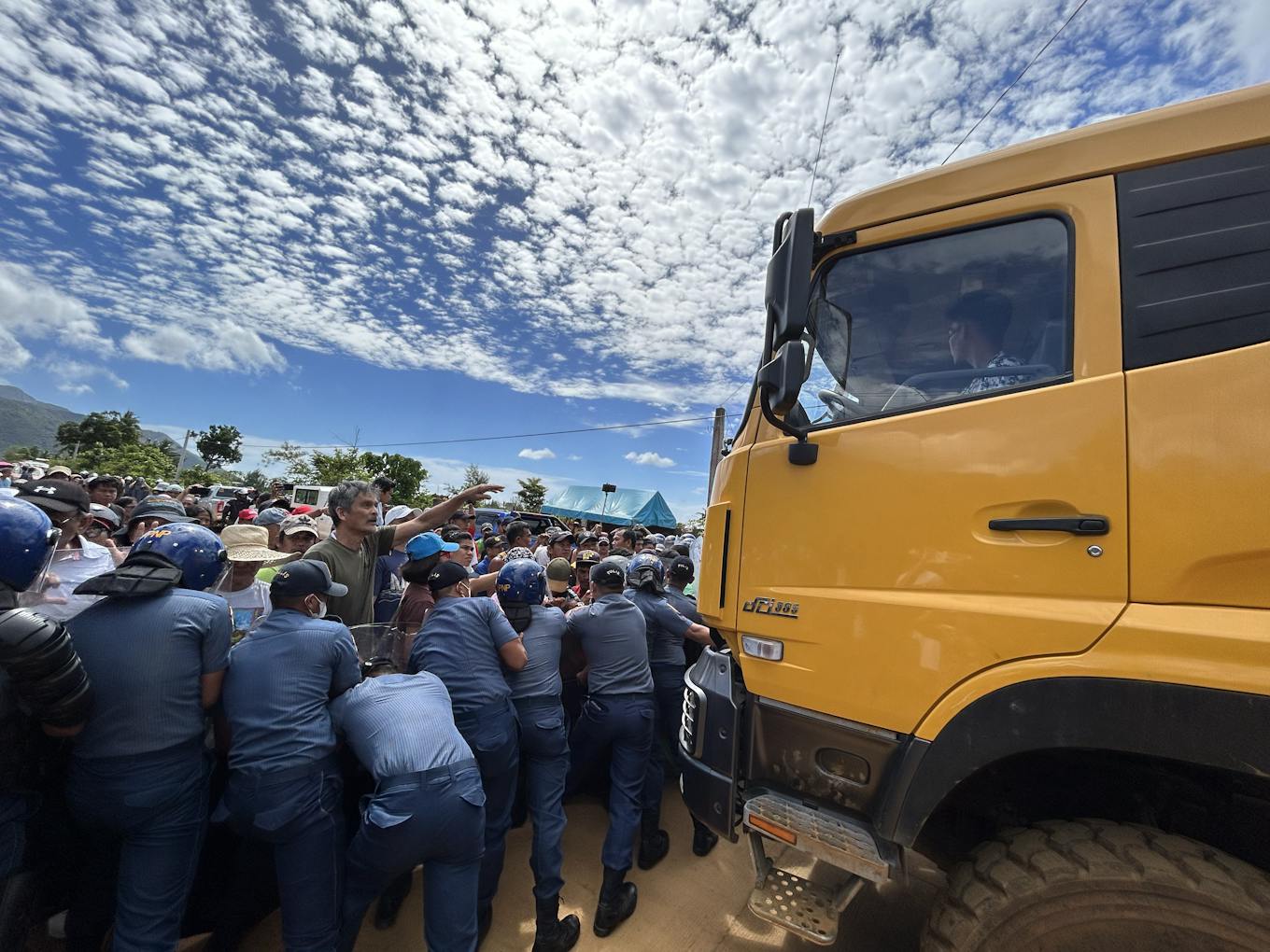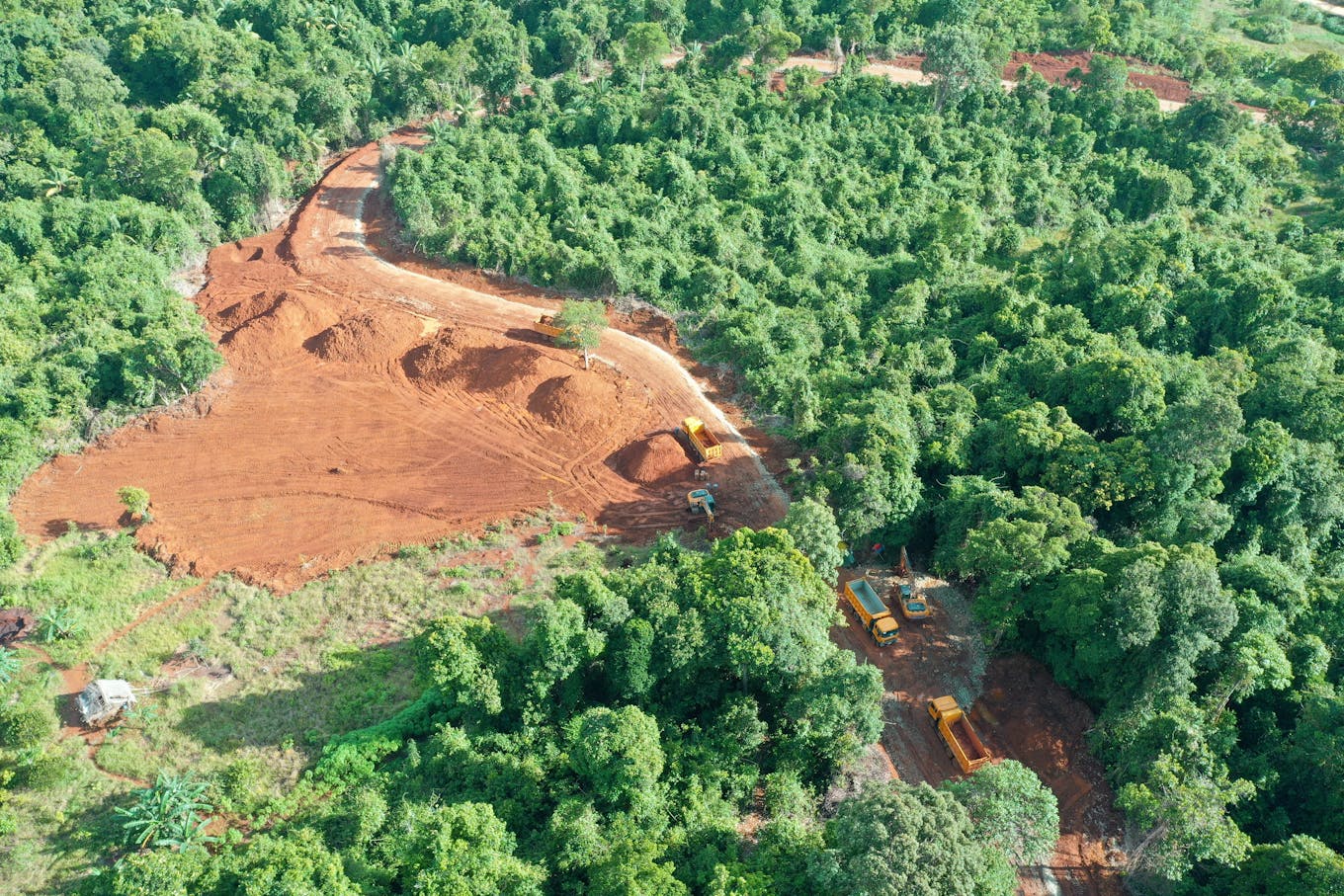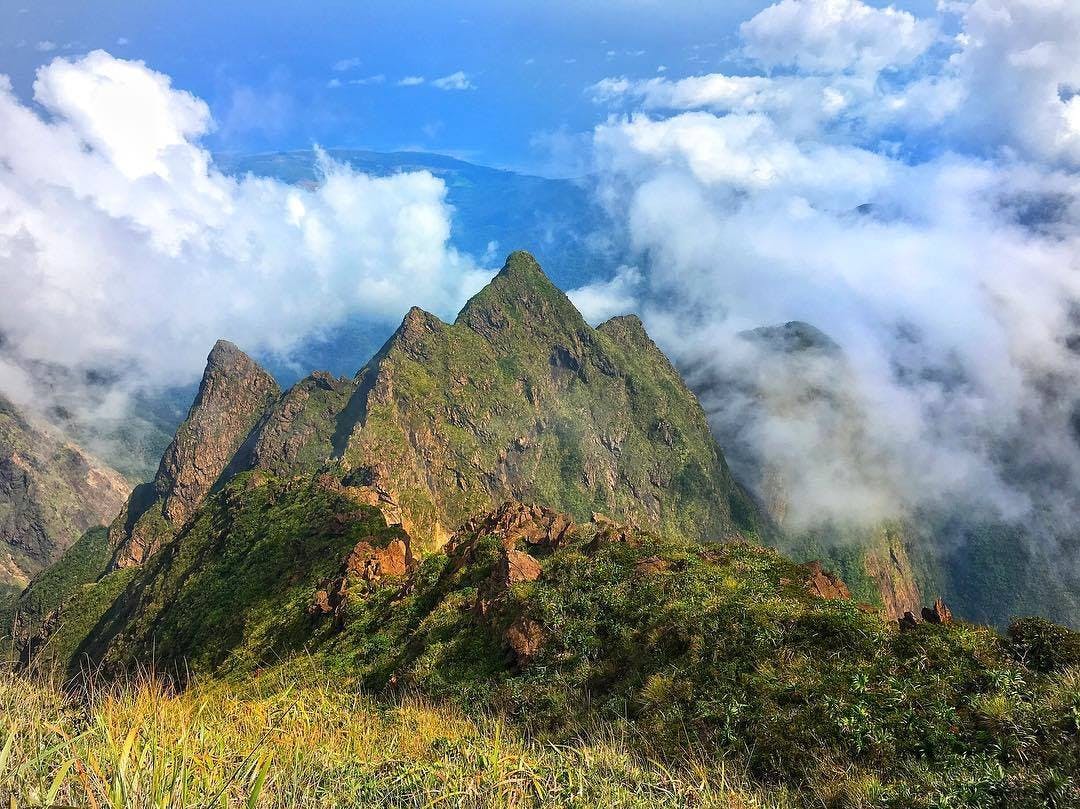Jhay Romero, a 40-year-old father of four, held on tightly to his neighbours as he joined their barricade to stop police who were trying to disperse them on Friday in the town of España, Sibuyan Island, Romblon in the Philippines, where they live.
To continue watching, subscribe to Eco‑Business.
There's something for everyone. We offer a range of subscription plans.
- Access our stories and receive our Insights Weekly newsletter with the free EB Member plan.
- Unlock unlimited access to our content and archive with EB Circle.
- Publish your content with EB Premium.
About a hundred residents of the island were struggling against 30-strong law enforcers to stop trucks belonging to nickel firm Altai Philippines Mining Corporation (APMC) from hauling the metal to a waiting barge to be shipped to China. Locals claimed the extraction of nickel ore would disrupt the island’s intact ecosystems.
The extraction was part of the company’s exploration activities, which included a shipment of 50,000 wet metric tonnes of nickel ore on its way to be tested for metallurgical bulk sampling to verify the quantity and quality of nickel. But residents like Romero said the company had no permit to certify that their operations would not cause environmental harm to the island.
The struggle soon turned into chaos when police broke through the line of people, leaving two injured, including Romero.
“We are doing this for our island and for our children’s future here. We are not afraid, even if it is dangerous and even if there are police forces. We will continue this fight until they leave our island,” Romero told Eco-Business.
“
[Sibuyan is] just a dot in the Philippines. If mining happens here, the small area that we have will be taken over. Our children will inhale the dust and our livelihoods will be gone.
Jhay Romero, resident, Barangay España, Sibuyan Island, Romblon
By Monday evening, APMC declared that it was stopping its “exploration and testing activities” on the island, after a week-long stand-off with the police.
Prior to APMC’s announcement, the department of environment and natural resources (DENR) issued a cease and desist order against the company after it was found to have contaminated water resources, for not securing a foreshore lease agreement for a pier and certification that the project would not cause negative environmental impact, and for cutting down several trees without a permit.

Police try to break up the human barricade that residents of Sibuyan Island formed as they tried to block the trucks of Altai Philippines Mining Corporation (APMC) from leaving with nickel ore on 3 February. Image: Alyansa Tigil Mina
Despite the halt in operations, Romero said they would be on their guard until the cargo ships and trucks disappeared from the island.
“We are just a dot in the Philippines. If mining happens here, the small area that we have will be taken over. Our children will inhale the dust and our livelihoods will be gone,” said Romero.
“
We should first safeguard the indigenous people and ecologically-sensitive areas before thinking about exports.
Rodne Galicha, executive director, Living Laudato Si Philippines
The island has been called the “Galápagos of Asia” because it is isolated from the Philippine archipelago. The volcanic islands of Galápagos, which lie 965 kilometres off the coast of Ecuador, are famous for a wealth of unique plants and animals found nowhere else in the world.
Similarly, Sibuyan Island has preserved its wealth in flaura and fauna. It is home to Mt. Guiting-Guiting Natural Park, known for its scenic landscape and endemic plant species.

An aerial view of the miing area of Altai Philippine Mining Corporation in Barangay España, Sibuyan Island in Romblon. Image: Cot Catajay
A history of fighting for their land
It is not the first time locals have pushed back against mining in Sibuyan.
Interest in the island by mining companies dates back to the early 1970s when the government awarded a contract to Sta. Barbara Development Corporation to conduct mining exploration in the area. This was halted after former president Fidel Ramos declared Mt. Guiting-Guiting as a national park.
By 2007, former environment secretary Angelo Reyes approved five special cutting permits to clear forests and give way to mining activities in Sibuyan where almost 70,000 trees were to be cut down. A few months after, the permits were suspended, after local residents called the operations of small-scale miners there “illegal” and “doubtful”.
In the same year, municipal councillor and environmental activist Armi Marin was killed by a security officer of a mining company during an anti-mining rally.
In 2012, Fil-China Mining Development Corporation applied for a mineral production sharing agreement (MPSA), which gives the right to mine within a contracted area, but it was rejected by the municipality. The town mayor then said Sibuyan was a tourism development area, identified as no-go zones for mining.

Mount Guiting-Guiting in Sibuyan Island is known for having one of the most diverse forests in the world. Image: I Love Philippines
Joseph Gutierrez, who has lived in the island for half a century, said he has witnessed decades of protests against mining.
“It’s hard fighting against mining because there is no certainty on the outcome of what you are fighting for. You don’t know who’s on your side. But it’s better this time compared to before because residents now are more well-informed about the consequences of mining with the help of the social media,” Gutierrez told Eco-Business.
The protests at Sibuyan comes amid the Philippine government’s declaration that it will prioritise exporting processed nickel ore to overseas markets to further grow the economy based on the country’s latest five-year development plan despite mismanagement on the ground.
Rodne Galicha, executive director of Living Laudato Si Philippines, an environmental advocacy group affiliated with the Catholic Church, called on the government to put the country’s needs for nickel before the interests of other countries.
“We should first safeguard the indigenous people and ecologically-sensitive areas before thinking about exports,” he told Eco-Business. “We need to focus on strategic minerals that our country needs for industrialisation when it comes to sectors of agriculture, manufacturing, tourism and many others that contribute more to our gross domestic product.”
Video courtesy of Alyansa Tigil Mina
Want more Philippines ESG and sustainability news and views? Subscribe to our Eco-Business Philippines newsletter here.










